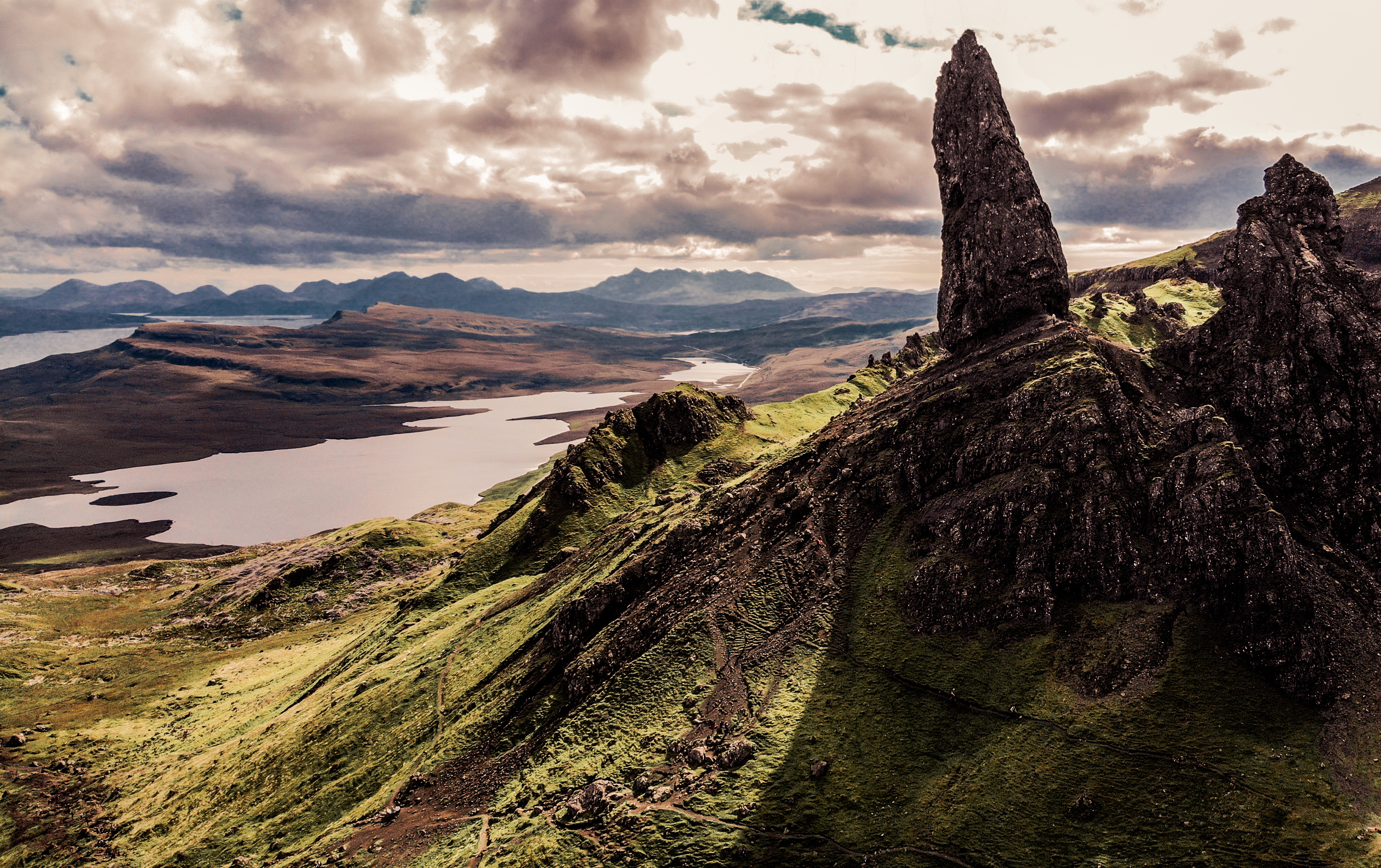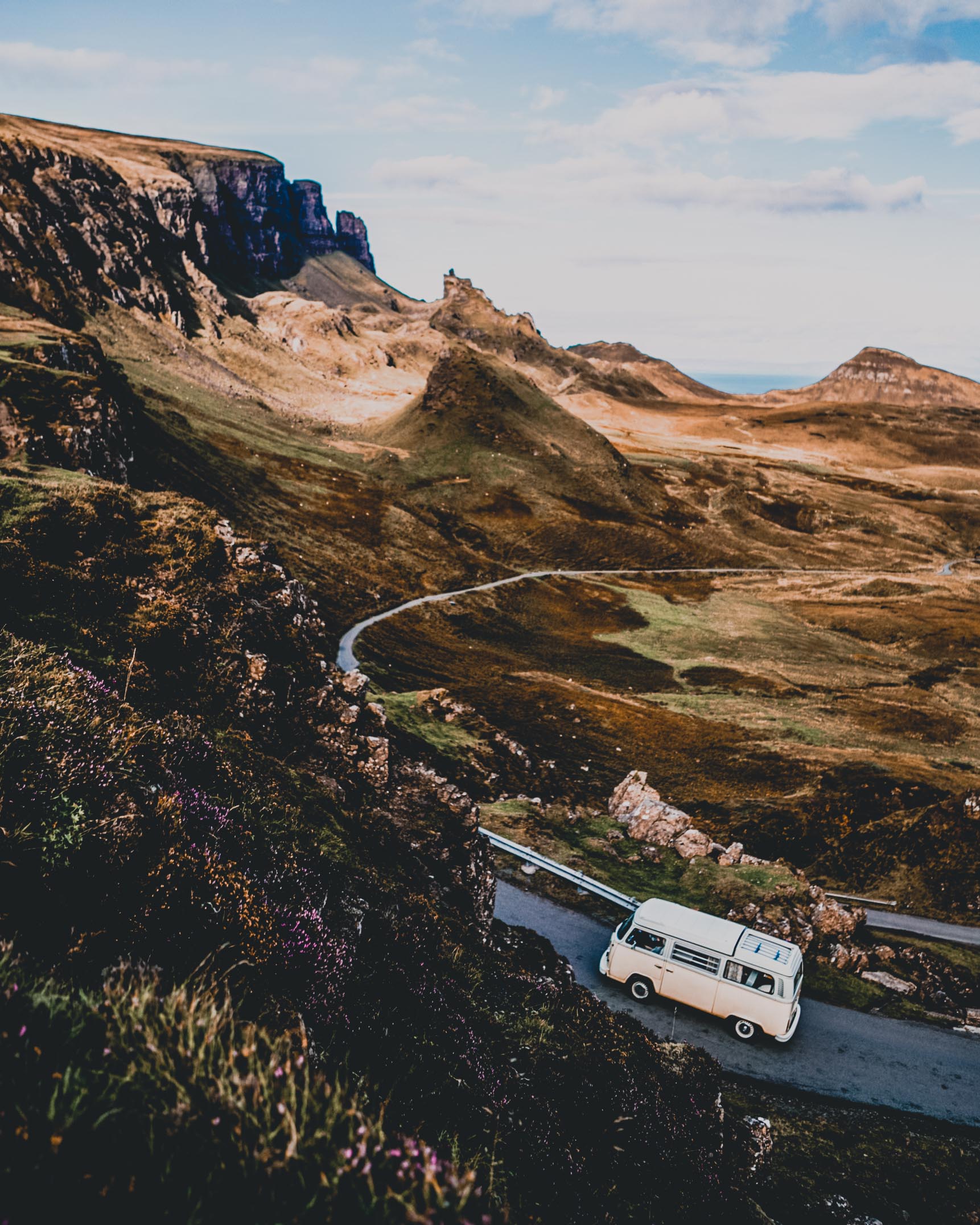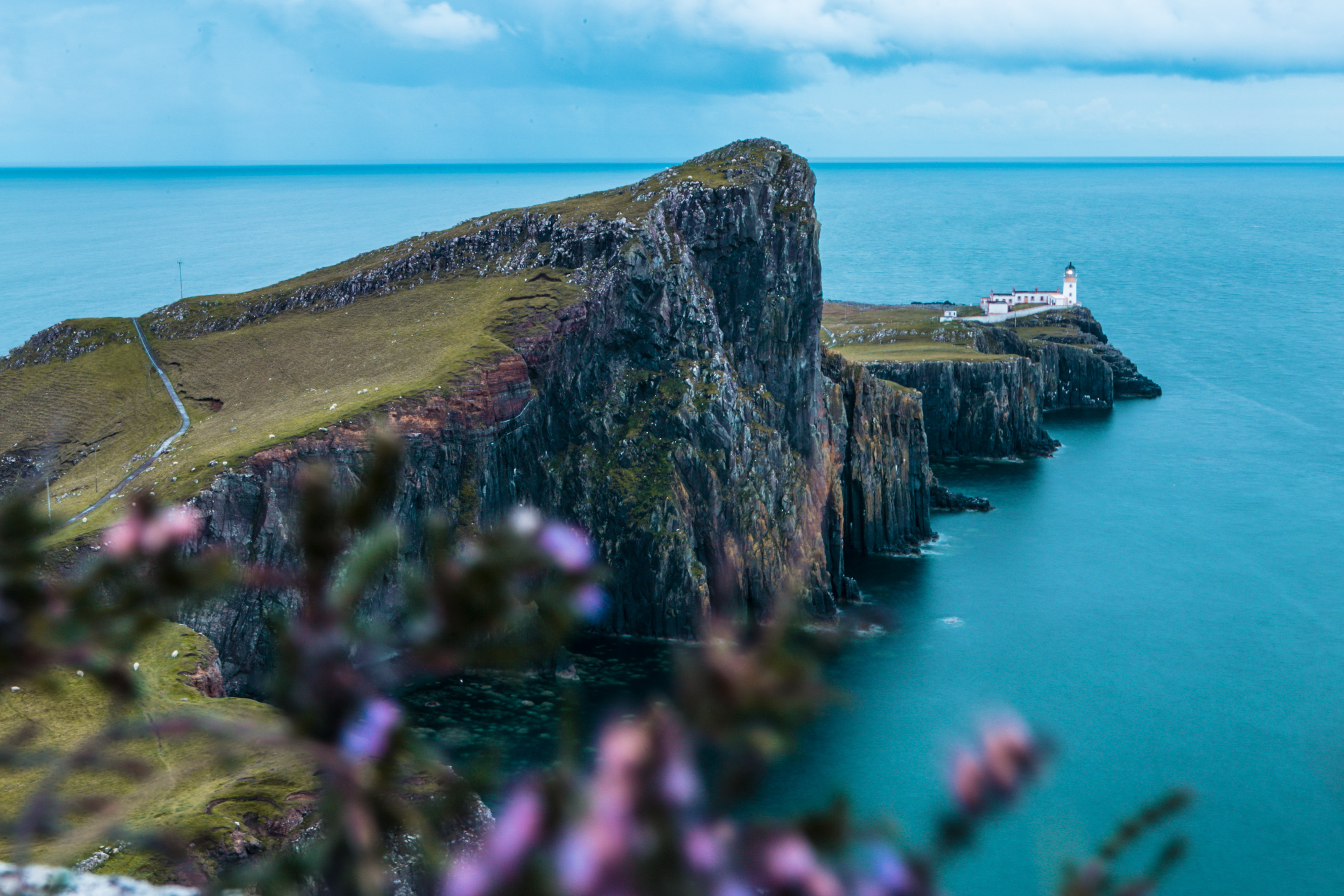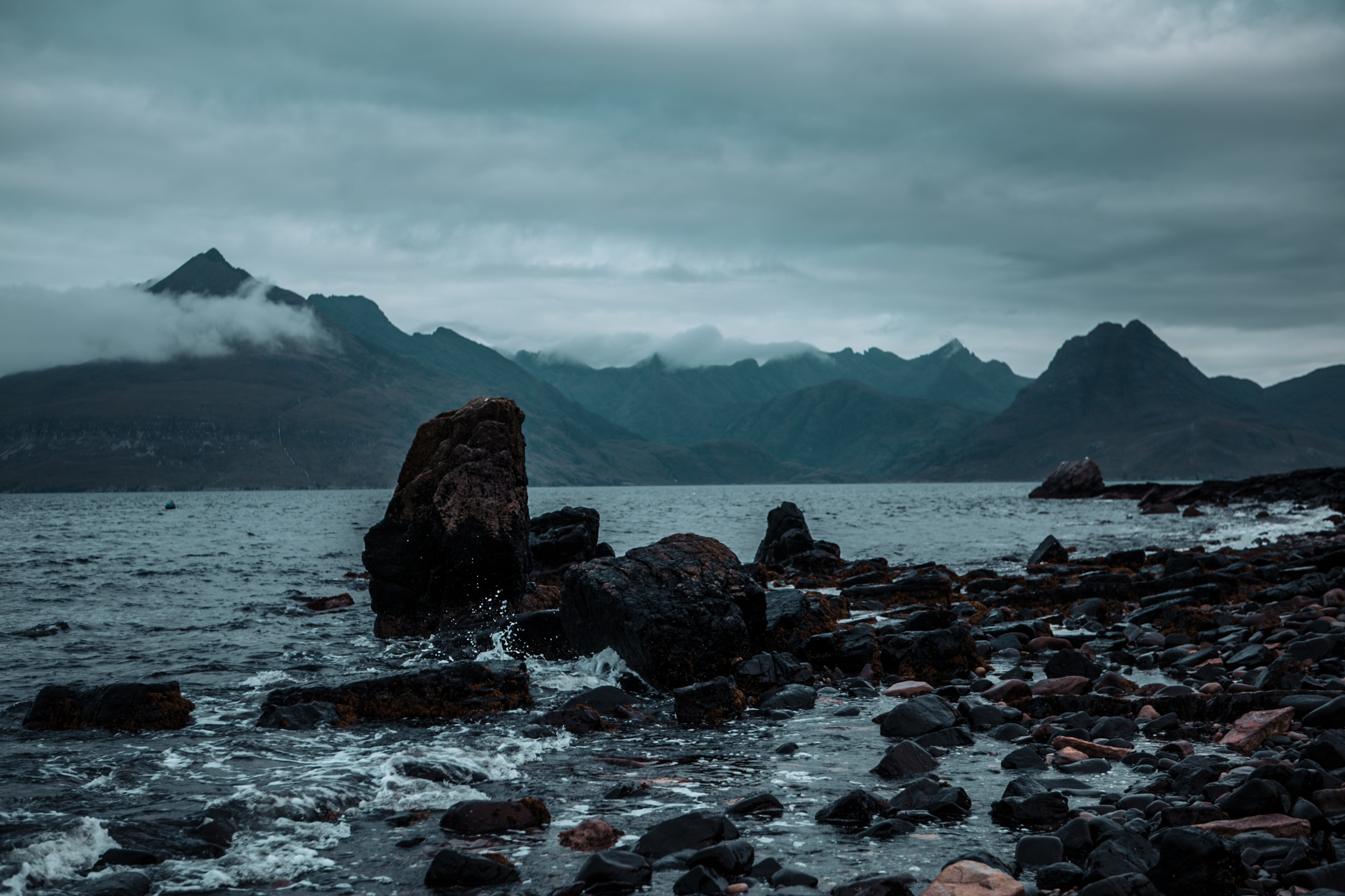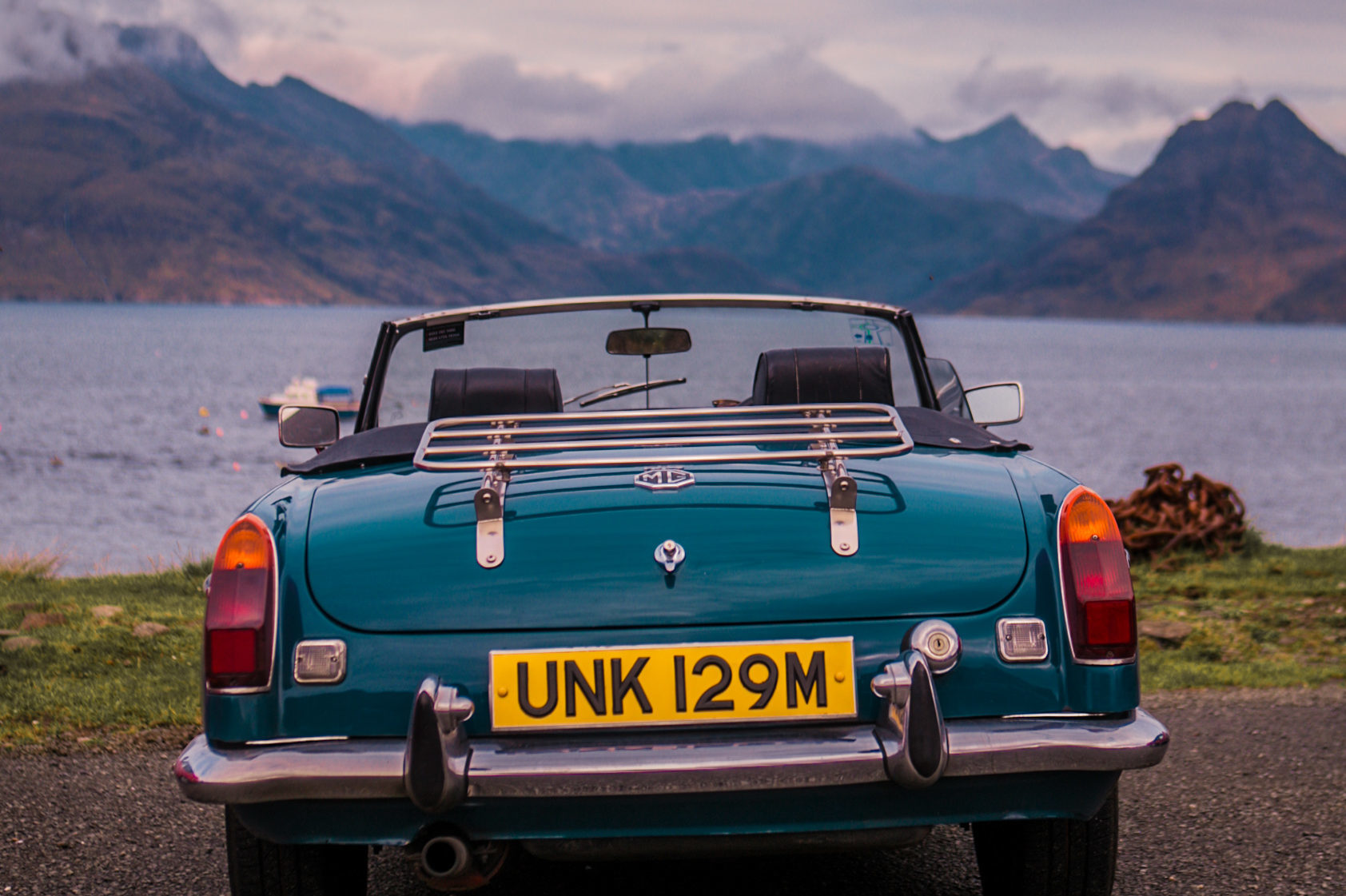THE Isle of Skye has been the centre of much debate recently, with reports of over-tourism ruining areas of beauty, amidst locals asserting the island is very much “open for business.”
The island has been granted funding from the European Union to help improve infrastructure – widening single track roads and increasing car park spaces – to aid with the growing amount of tourists descending each summer.
But what is the real allure of this revered Scottish island? Why is it so popular? Is tourism really killing Skye, or are we still at liberty to consume responsibly?
We took a trip to the infamous misty isle during the busiest summer month to find out.
Hiring a camper van from Cookie Camperz in Dunoon, we headed north on the hefty five hour trip to get to Skye for an August weekend – the wide open roads of Glencoe and twisting mountain ranges to Kyle of Lochalsh and the bridge to the island well worth the static radio and long haul drive.
Two days isn’t much on Skye however – its vast expanse of mountains, peaty valleys, dramatic cliffs and sea lochs bordered and carved out by winding, single track roads take a long time to traverse, even with the best intentions.
Looking at our buffering Google maps, and aware of the impending rain forecast, the best journey to see the most in the shortest space of time was to head to the Trotternish Peninsula – travelling north via the Old Man of Storr then looping round over the Quiraing and finishing up at Neist Point for sunset.
Day one
Portree to The Old Man of Storr (15 minutes to base – two hour return hike)
It’ll already be a well known scene to sci-fi film lovers, recently appearing in the opening scene of Ridley Scott’s Prometheus, and the Old Man of Storr’s ethereal beauty of towering basalt rock is undeniably otherworldly.
This was Skye’s busiest spot however – its close location to Portree and easy accessibility from the main road an unavoidable lure. Unless you camp up there, or head at the very first slither of sunrise light, you’ll be amongst throngs of tourists arriving by the coach load. No wonder it’s one of the most photographed spots in Scotland – Instagram alone has well over 40,000 images uploaded of the view.
Although the crowds were many, there was a path in place, which we – along with everyone else – seemed to be sticking to, so the undergrowth itself wasn’t being affected by the pitter-patter of a thousand feet. And the area itself is so large, even with the many hikers attempting the walk, it still feels far from crowded.
Tourist presence: 4/5
Old Man of Storr to Kilt Rock (15 minutes)
From the Old Man of Storr, keep continuing north to Kilt Rock view point, where, depending on the time of year, a bagpipe player will be standing entertaining tourists.
Dodging round the snapping throng, look left from the car park viewpoint, and the towering cliffs allow waterfalls to burst downwards thousands of feet to the sea. Take a few pictures yourself, breathe in the salty air coming east from the Isle of Raasay and continue north over the Quiraing road.
Tourist presence: 4/5
Kilt Rock to Uig via the Quiraing (30 minutes)
This is undeniably one of the prettiest views in Scotland, and you feel the inescapable reality of your insignificance when you stand at the top of the Quiraing looking across the vast valley below. There were a few hikers embarking on the trail that Saturday afternoon, but the road itself was quiet.
This was a trait of Skye – lonely, fairly empty single track roads, then a sudden burst of activity at the next tourist spot or view along the trail. It misled you from feeling like the island was busy, only remembering again when you stopped at a café, or passed a campsite.
Tourist presence: 2/5
Uig to Neist Point (one hour)
We were thankful for our campervan as we drove up to Neist Point at around 8pm. The vastness of Skye means that if you stay in one place, you’ll no doubt have quite a drive back to your homestead after a day of exploring.
Neist Point is breathtaking. Partly to do with its beauty and partly to do with the rather steep walk to and from the lighthouse. It has a Faroe Island or Norwegian quality to its towering cliffs and wild, moody air.
If you want to save time and simply see the lighthouse from afar, head to your right when you reach the car park and walk along the cliff edge until you come to the postcard view of one of Skye’s and Scotland’s most stunning points. Mementos of the area’s past pepper the cliffs, with pulleys and old ropes for fishing boats lying forgotten underfoot.
While it’s one of Skye’s most iconic views, Neist Point was very sparsely populated when we visited. This was the wildest and most removed spot we experienced on Skye, and sitting alone, looking at the view of the lighthouse blinking atop the cliffs as the light faded and the gulls screeched was humbling.
Tourist presence: 1/5
Day two
Dunvegan to Portree (30 minutes)
On our first night, we experienced a real, immediate threat from the tourist saturated Skye – not being able to find anywhere to eat. Everywhere seemed full, and the Hobnobs and Pringles sitting soggily in our campervan just weren’t going to cut it. We eventually managed to secure a table at 10pm at The Old School restaurant in Dunvegan, where we slept that night in a small campsite next to the calm waters of the village’s Loch.
It poured all the next day. When this happens, you can either embrace it, or hide from it. We chose to do both and visited Dunvegan Castle, the oldest inhabited castle in northern Scotland, a small bothy where the giant Angus MacAskill had once lived in Dunvegan, then spent the rest of the afternoon cosy in a Portree pub, enjoying Skye Craft Beer and Talisker whisky.
On Skye, you must also note, almost everything is closed on a Sunday, as the Misty Isle shuts her doors to enjoy the Sabbath in peace away from the pesky, aforementioned tourists.
Tourist presence: 3/5
Portree to Elgol (one hour)
Slightly off the beaten tourist track – unless hopping on a boat to take you on a tour of Loch Coruisk – Elgol is a hidden gem, a place where time seems to stand still and cows and sheep have the lie of the land.
We arrived here after dinner in Portree and woke to the sound of waves lapping on the shore, and the sight of a family of cows coming down from the hills to lick the salt on the rocks and nod good morning to the children playing in Elgol Primary School. Setting off home from this scene was difficult and as we left the island, I’m afraid a controversial thought popped into my head… Whether you like it or not Skye – by bridge or by bonny boat – I have to come back.
Tourist presence: 2/5
The verdict
While Skye was busy at view points, and certainly felt very touristy in areas of easy access, the idea of it as a crumbling landmass beneath the stomping foot of tourism seemed too much.
And locals seem to agree.
An open letter by businesses on the island earlier this month attempted to dispel myths that Skye was ‘swamped with tourists.’ It was backed by 100 signatories including Isabella Macdonald of Kinloch Lodge, Macleod Estates, the Stein Inn, and popular attractions such as Dunvegan Castle.
The letter stated: “The tourist industry can be a relatively unpredictable industry and so it concerns us to see sensationalist stories in the national press, for a second year running, which could jeopardise the jobs, businesses and income of local people.
“We would hate to see an industry which has taken many years to develop undermined by a few stories which don’t fairly depict the efforts of hardworking people across the area.”
Shirley Spear, owner of the celebrated Three Chimneys restaurant, and chairman of the Skyeconnect group, also said she and her colleagues had worked tirelessly to dispel the myth that Skye is overrun with tourists.
And local councillor, Ronald MacDonald believes that there are dangers to the claims that Skye is swamped by tourism. He said: “Like any Scottish island in the summer, Skye is busy, but we are addressing infrastructure issues to deal with this.
“The expansion of parking at iconic sites like Neist Point, The Quiraing, Fairy Pools and Old Man of Storr are either underway or on the verge of completion.
“A lot of the recent press surrounding Skye has been undeserved – press saying crazy things like the island is closed for business can actually be very damaging to the local economy.”
Find out more about the reality of tourism on Skye: www.skye-connect.com
All images, footage, drone footage and film by Megan McEachern.

Enjoy the convenience of having The Sunday Post delivered as a digital ePaper straight to your smartphone, tablet or computer.
Subscribe for only £5.49 a month and enjoy all the benefits of the printed paper as a digital replica.
Subscribe